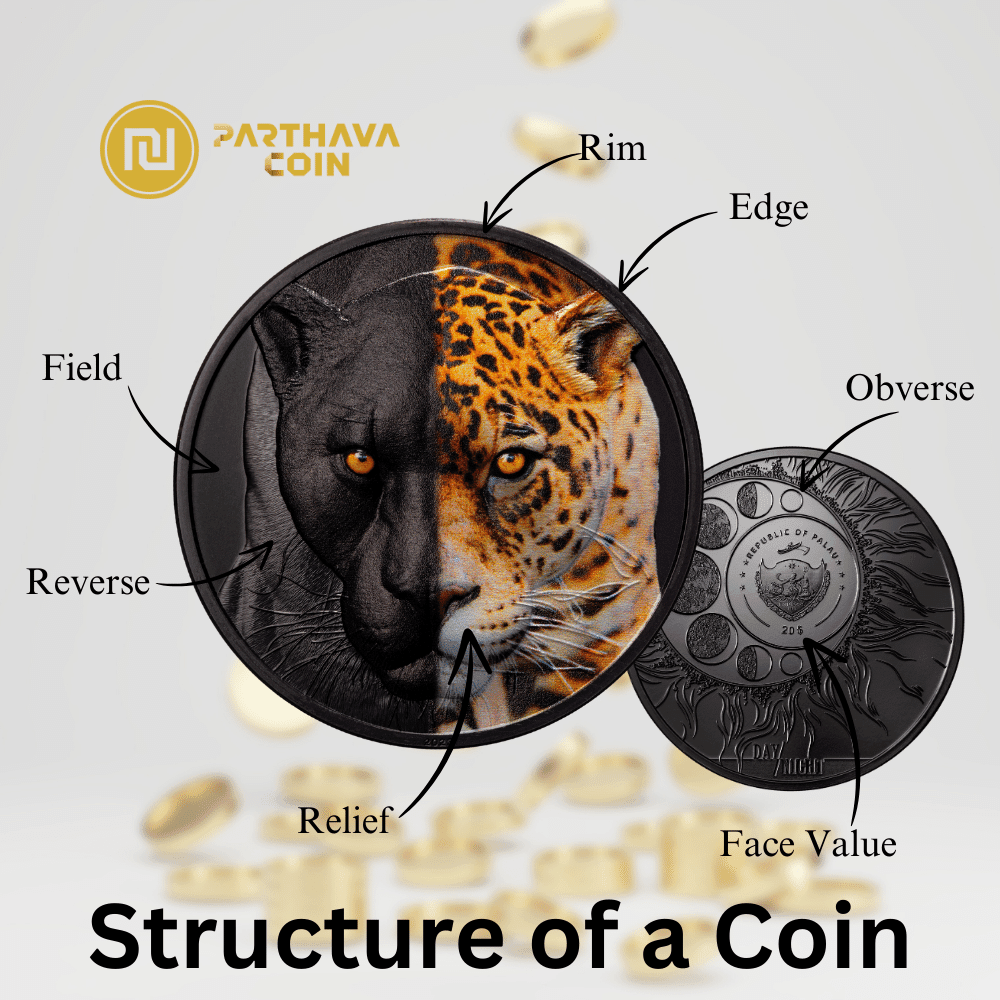Understanding the structure of a coin is crucial for collectors. Here are the key parts of a coin:
Obverse
The "heads" or front side of a coin, typically featuring the national emblem or a prominent person's portrait.
Reverse
The "tails" side of a coin, usually showcasing the chosen design or theme.
The raised, three-dimensional image found on a coin's field, adding texture and depth to the design.
Field
The flat background area of a coin where the relief is struck, providing contrast to the raised elements.
Rim
The raised edge that runs around the perimeter of a coin, enhancing durability and structure.
Edge
The outer border of a coin, often referred to as the "third side." It can be plain, serrated (reeding), or feature unique designs.
Issuing Country
The country where the coin is officially issued.
Year of Issue
The year the coin is minted and released.
Face Value
The nominal value of the coin as indicated by the issuing authority, not to be confused with its market value.
Coin Composition
Understanding the composition of coins is fundamental to appreciating their value and significance. Coins are crafted from a variety of metals, each with unique properties that contribute to their desirability and worth. The choice of metal affects not only the coin’s appearance and durability but also its investment potential. Here’s a closer look at the most common metals used in coin production and why they are valued by collectors.
- Rarity: Most gold coins are minted in limited numbers, making them highly sought after by collectors.
- Durability: Gold is nearly indestructible, resistant to rust, tarnish, and decay.
- Purity: 99.999% pure gold is the highest standard of investment gold available.
Silver
- Versatility: Silver is the most versatile of all precious metals.
- Legal Tender: Some silver coins can still be used as legal tender.
- Properties: Strong, pliable, with superior conductivity and reflective qualities.
Platinum
- Rarity: Platinum is one of the rarest precious metals.
- Durability: Similar to gold but more durable, platinum is a natural element that does not tarnish over time.
By understanding the different metals used in coin composition, collectors can make more informed decisions about which coins to add to their collections. Each metal brings its own unique set of attributes, making every coin a special piece of history and art.


Share:
Glossary of Coin Collecting Terms
Caring for Your Coins